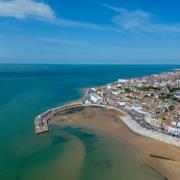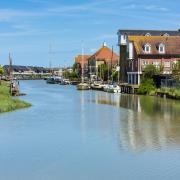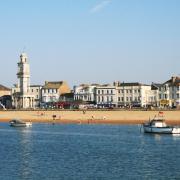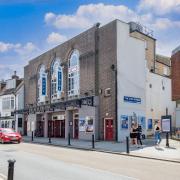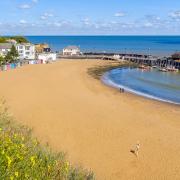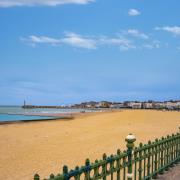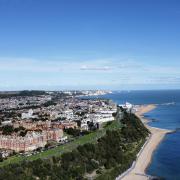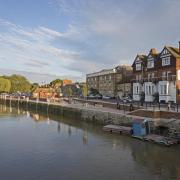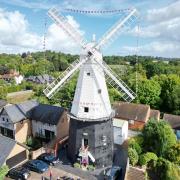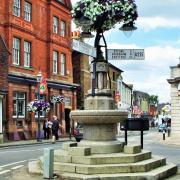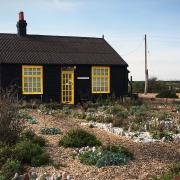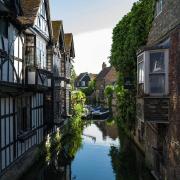Kent's four churches and their artworks featured here are all the object of the imaginative caring that every place of worship requires
Kent’s four churches and their artworks featured here are all the object of the imaginative caring that every place of worship requiresAll Saints, TudeleyThe dates and places of the first of Kent’s chosen artists with work in churches make clear his international identity and fame. Mark Chagall was born in Vitebsk 1887 and died in 1985, after a tempestuous and worldwide life in art.
How did he come to work for a village church in Kent, All Saints, Tudeley? The same set of circumstances will an answer a similar question relating to a small church near a family estate in Tarrytown, New York State on the Hudson River’s east side.
The d’Avigdor-Goldsmid family of Tudeley and the Rockefellers of Tarrytown had both, independently, visited the Chagall exhibition in Paris at which his windows for Jerusalem had been displayed. Each resolved to have their local church enhanced by Chagall glass.
In the case of All Saints, however, an additional and most poignant motive informed the commission for Kent: a tragic accident of drowning had taken from the family their 21-year-old Sarah.
There are grieving figures looking on the visionary scene the artist designed in glass for the east window. A Christ on the cross is the loving and welcoming figure awaiting Sarah, who is borne to the waiting ladder on a red horse (symbolic of joy for Chagall), surrounded by angels.
A tranquil blend of greens and blues suffuses the church interior. Many visitors find the ambience created by the architecture and the artist and the space uplifting, and many remember visitors falling silent.
The Tudeley and the Tarrytown schemes were each begun in 1967, and along with continental Cathedral examples establish Chagall as a notable artist in the service of both the Jewish and Christian religions – his Biblical paintings commanding the special loyalty of religious sensibilities.
Challock Church Challock Church, dedicated to Saints Cosmas and Damian, honours two martyrs of the early Christian centuries of such fame that plentiful legends grew up around them. These are the subject of the mural paintings which engage and delight the visitor: the earliest, done by John Ward and Gordon Davies, were completed in 1956 when the church building (like the congregation) was still picking itself up after damage and hurt sustained in the Second World War and a period of bad winters.
Roofs and columns had collapsed but a doughty soldier churchwarden, Major Jack A. Botley of nearby Beech Court, drove a restoration campaign which recovered the fabric of the building.
These murals depict the Life of Christ, set in Challock. Parishioners people the scenes, and nearby Eastwell Park Lake is the backdrop of Christ’s preaching.
A further set of murals (1953) had been done for the Lady Chapel by two Royal Academy Schools students, Rosemary Aldridge and Doreen Lister, winners of a competition supervised by Henry Rushbury, Keeper of the RA schools, and initiated by Churchwarden Major Botley.
The saints’ stories are told episode by episode, and the viewer learns of their healing works, their trial, their vetinerary work, and other local concerns. Later knighted, Sir Henry Rushbury RA took a great personal interest in the Challock murals, and care of the project ensured the high quality of the work.
The building received yet a third mural to celebrate the new millennium, John Ward enthusiastically returning to the task with Gordon Davies to complete a large and ambitious composition, assisted by art students Gabriella Denny and Sally Penfold. Some 85 portraits bring to life a Palm Sunday scene with Christ riding into a crowded Challock.
As is true of most murals before and since Leonardo da Vinci’s Last Supper in Milan, they do react to their locations, and both parishioners and visitors to Challock, as well as enjoying the murals, join in the fundraising to care for them and conserve them.



